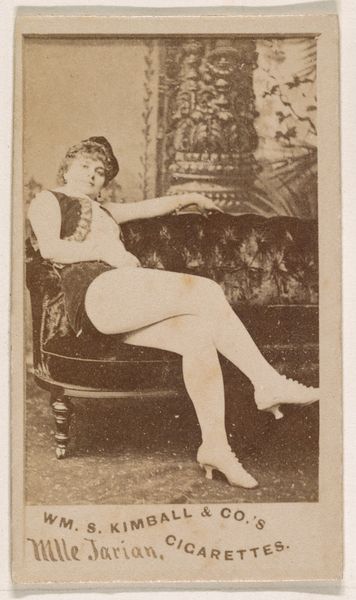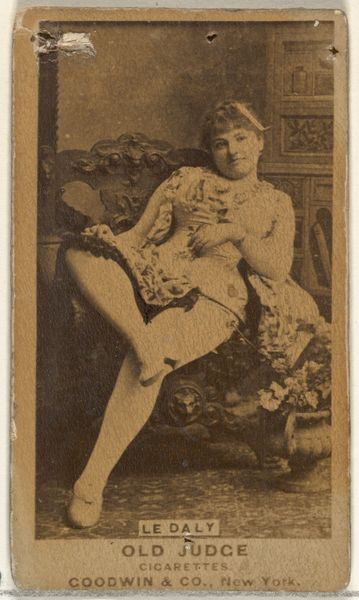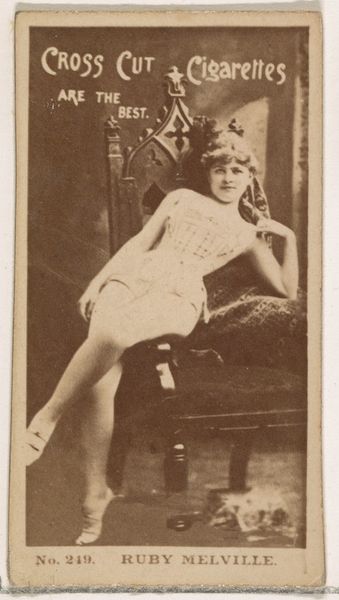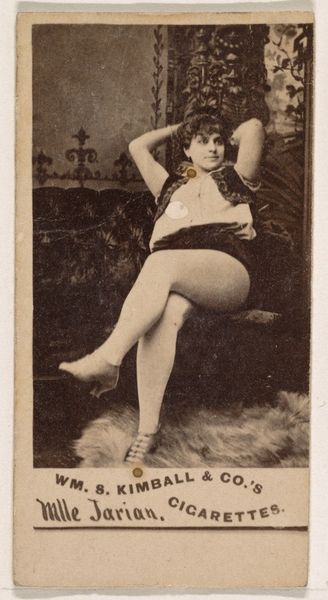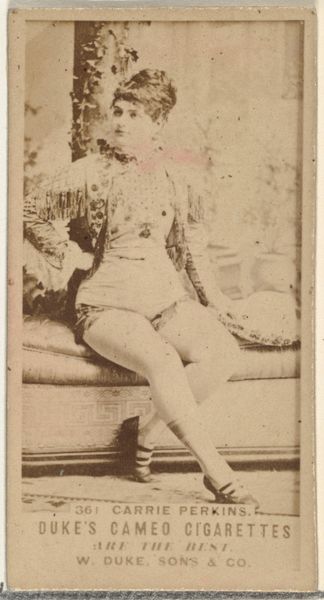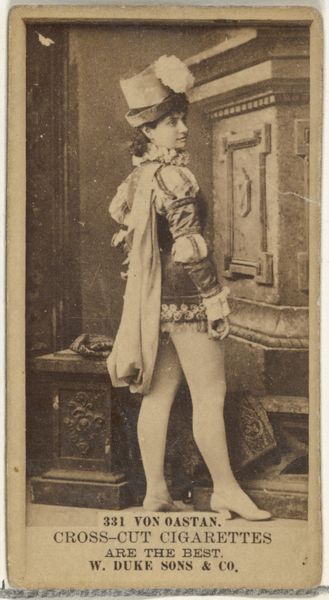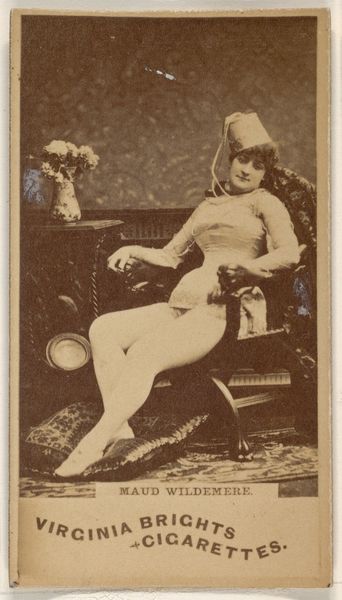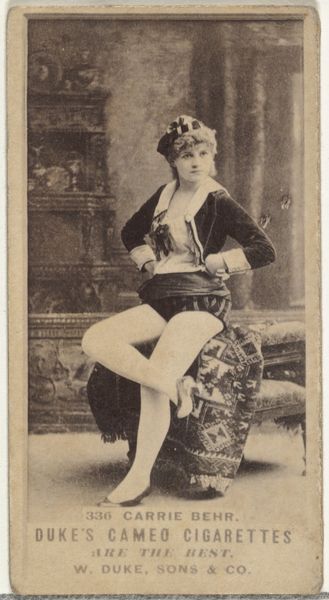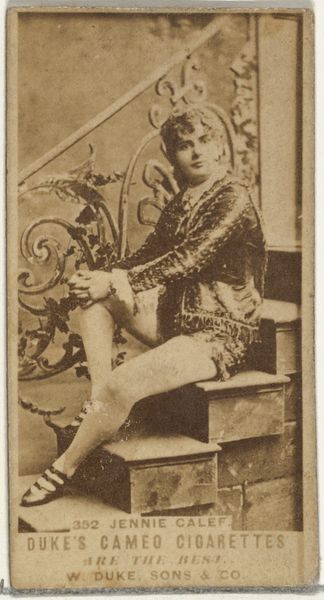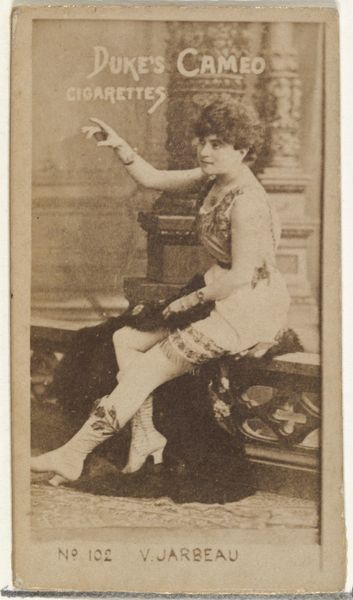
Card Number 348, Leonda Jarcaw, from the Actors and Actresses series (N145-5) issued by Duke Sons & Co. to promote Cameo Cigarettes 1880s
0:00
0:00
drawing, print, photography
#
portrait
#
drawing
# print
#
figuration
#
photography
#
19th century
Dimensions: Sheet: 2 11/16 × 1 3/8 in. (6.8 × 3.5 cm)
Copyright: Public Domain
Editor: This is Card Number 348, featuring Leonda Jarcaw, from the Actors and Actresses series, dating to the 1880s. It's a promotional print from Duke Sons & Co. for Cameo Cigarettes. It strikes me as a really curious blend of portraiture and advertisement. What do you see in it from your perspective? Curator: For me, the most interesting aspect is its function as a commodity. It collapses the distance between the glamorous image of an actress and the everyday act of smoking. The materiality of the card itself - the paper, the ink, the printing process - is crucial. It was mass-produced, distributed with cigarettes, meant to be collected, traded, and consumed like the tobacco it advertised. Think about the labour involved. Editor: So, you're saying the value isn't necessarily in the artistry of the portrait, but in the card’s role in this wider system of production and consumption? Curator: Exactly! We have to consider the working-class origins of mass-produced ephemera like this. The card transforms the actress, Leonda Jarcaw, into a sign, something to be bought and sold. Consider what it means that her image, her likeness, is reduced to an easily reproduced commodity meant to encourage people to purchase a product. The card itself had to be affordable, and so inexpensive processes had to be implemented in its creation. Editor: That's fascinating. I hadn't really thought about it in terms of labor and industrial processes before. Curator: It challenges that divide between "high art" and these more populist forms of visual culture, demonstrating a different system of artistic patronage and distribution that relied on appealing to a broader consumer base. It’s also a photograph turned print – consider that transformation and its democratizing effect. Editor: I see your point. It really reframes how I look at these kinds of collectible cards. Instead of just seeing a pretty picture, I'm now thinking about the whole economic and social system behind it. Curator: Precisely. By thinking through materials and processes, we realize that the actress is not the art; but the commodification and popular distribution of her likeness are aspects that can, and perhaps should, be seen as elements of it.
Comments
No comments
Be the first to comment and join the conversation on the ultimate creative platform.
